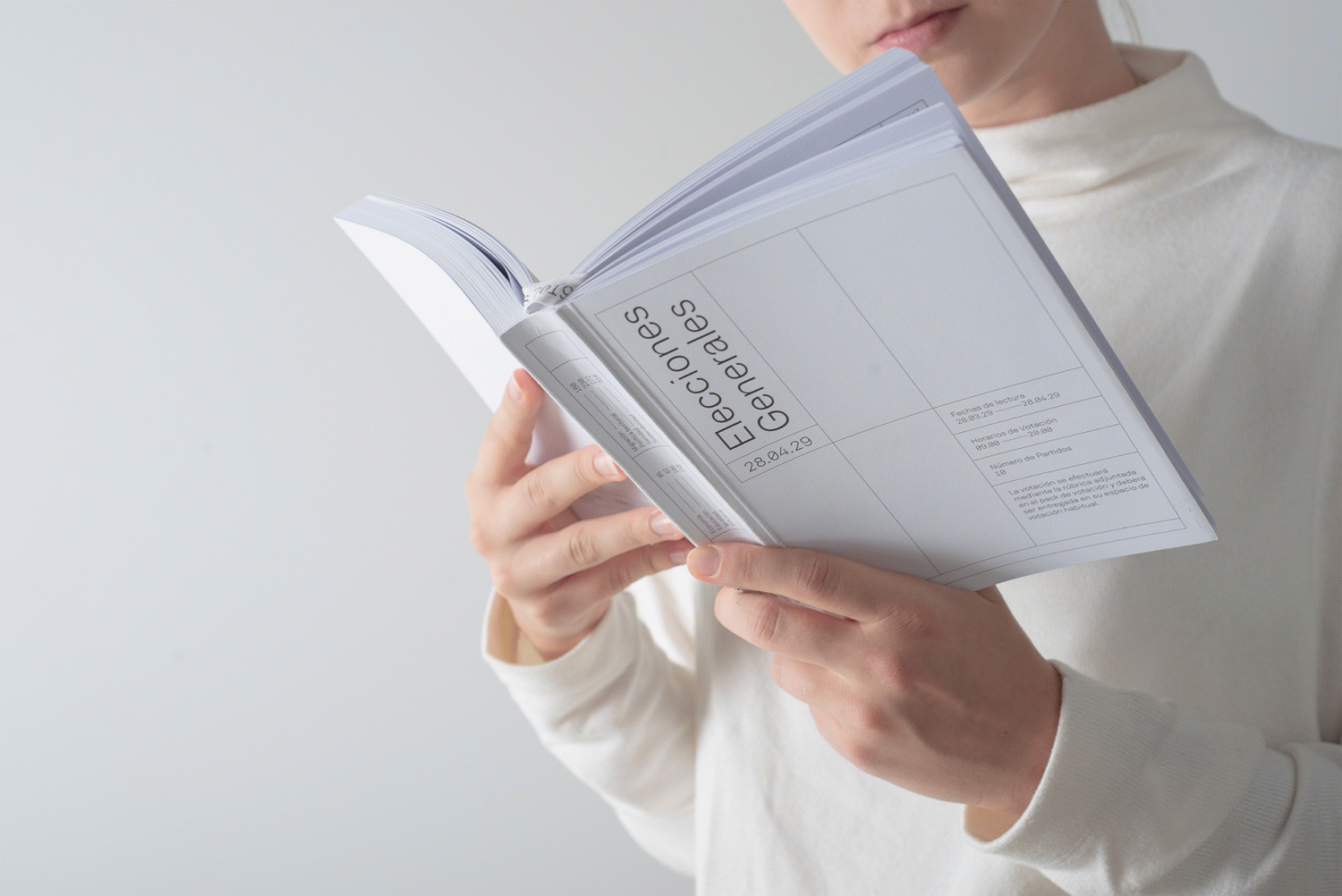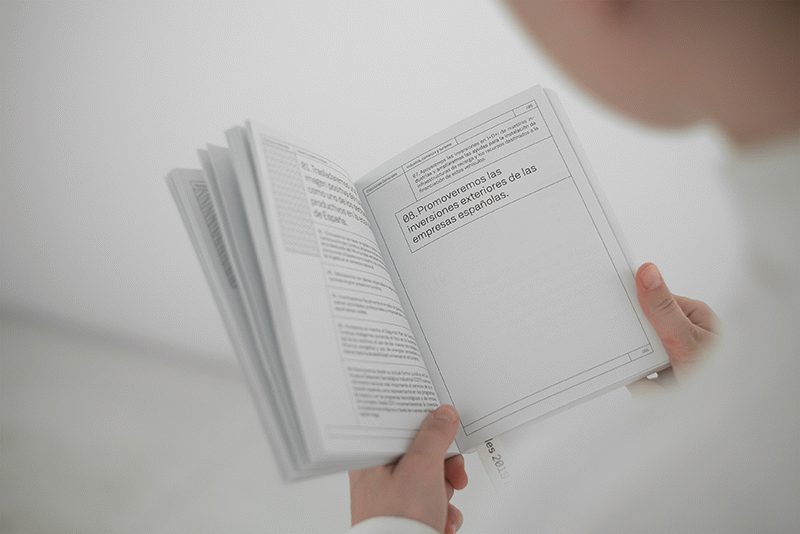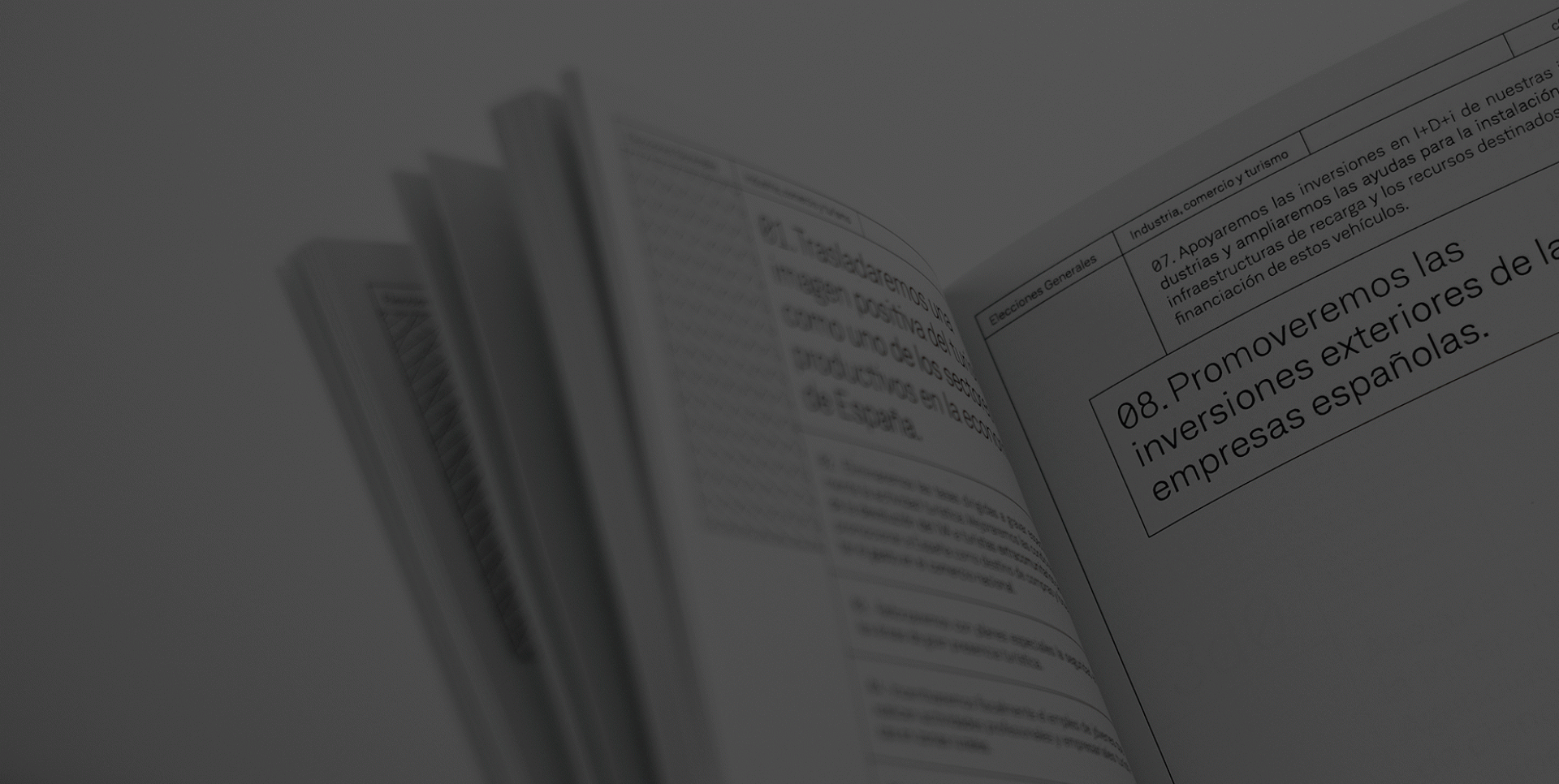Adlego speculates on the possibility of a politics centred solely on content, rather than political branding and marketing strategies. It also seeks new forms of communication and new electoral systems centred on the goal of creating an informed policy through personal decisions that avoids outside influences. This is a design fiction project that aims to generate debate around our electoral systems by reconfiguring the way in which design participates in politics, as well as the relationship between politics and citizens. It also shows the consequences of an electoral system with no image in an interventionist society such as our own. The project arises from a problem: modern voters are likely to cast biased or uninformed votes. Moreover, our current political system is based exclusively on image, adding to citizens’ poor political understanding. This proposal aims to highlight that problem by developing an electoral process based only on content.
The form of the project is a book that groups political proposals by each party according to theme. As the names of parties are part of their brand, and therefore also influence public opinion, they will be substituted with random codes generated by computer programs.
To ensure that the proposals are read, time limits will be placed upon entertainment on digital platforms, the most common form of entertainment in the present moment (Netflix, social media, television, etc.) and a reading order would be set for each theme.
Meanwhile, given that the only way to participate in politics now is by engaging the party content, a system to control reading comprehension will be implemented to determine the value of the vote using a rubric. As naming is part of branding strategy, and therefore party image, the names of parties will be eliminated in the system. Thus the sender of a political message is unknown and will not condition the election.
Party proposals are communicated via a book divided into different thematic areas. As this book will be the only place, along with political parties’ webpages, where all the proposals are listed, it ensures that everyone must read the programs in order to vote, and everyone will have a rounded image of all of the parties, avoiding scepticism and misinformation. The format has been chosen to enforce reflection: although we are considering a future scenario, paper books nonetheless allow for a more leisurely reading pace and a more relaxed headspace when compared with digital platforms. Likewise, as it is a physical document, it can be consulted during the whole of the electoral period and also throughout the legislature.
During the long reading period, citizens will fill in a rubric divided into parts that echo the themes in the book. This rubric serves to evaluate an individual’s affinity with each of the themes and each of the parties. It should be filled in while reading, and all questions must be answered.
It has also been noted that many parties have very similar proposals on many points. These can be used to generate checkpoints within the rubric.
Giving that the only tool the voter will have to choose a party to vote for will be these parties’ proposals, a level of control is necessary to ensure that these have been read and understood. Points of coincidence allow the system to define automatic parameters to determine the rubric’s consistency. Depending on the number of times that coinciding parameters have not been valued similarly in the rubric, the consistency percentage will go down, along with the value of the vote.
Likewise, this project seeks to empower voters’ individual decisions, uninfluenced by family or social surroundings. To ensure this, throughout the electoral period, interference will be controlled for on digital devices, and discussing the content of the book or the intention to vote for one party or another will be prohibited.
 Adlego - Ignasi Ayats Soler
Adlego - Ignasi Ayats Soler
 Adlego - Ignasi Ayats Soler
Adlego - Ignasi Ayats Soler
 Adlego - Ignasi Ayats Soler
Adlego - Ignasi Ayats Soler
 Adlego - Ignasi Ayats Soler
Adlego - Ignasi Ayats Soler
 Adlego - Ignasi Ayats Soler
Adlego - Ignasi Ayats Soler

